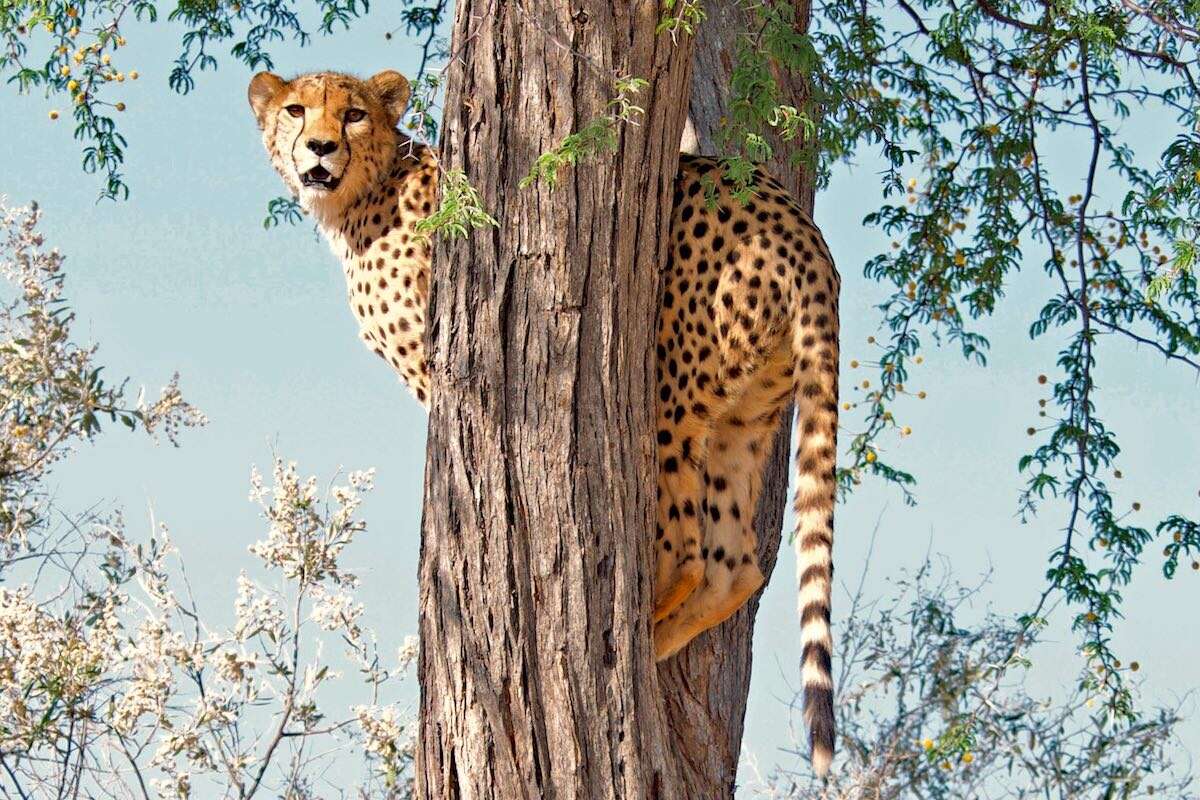
Giving plastic pollution a cute face
8th November 2023
8th November 2023
Seals are popularly known as the dogs of the sea. This is because seals and dogs are physically similar and therefore classed in the same carnivore sub-order called Caniformes (meaning dog-like). Even their behaviour is similar, as seals are known to be playful and intelligent. Not surprisingly, humans can easily relate to seals as the marine version of man's best friend.
Our interest in seals took on a new dimension when Namibian kayaking guide Naude Dreyer filmed himself freeing a Cape fur seal entangled in a fishing line in 2013. Sharing footage of this rescue mission and many subsequent ones on social media generated thousands of views per video and a following of over three million viewers on YouTube and TikTok combined. People around the world watch in admiration while Naude and his team wrestle seals to the ground just to cut them loose and let them go.
Each video is quite simple: a seal is spotted with a piece of plastic or other man-made object biting into its body like a snare. Naude or one of his team members takes off after the seal and catches it with a net or his hands (in early videos), then sets it free by cutting off whatever caused the problem. Even though some of the wounds left by these snares of the sea
are deep, it is likely that they heal quickly when exposed to the salty seawater.

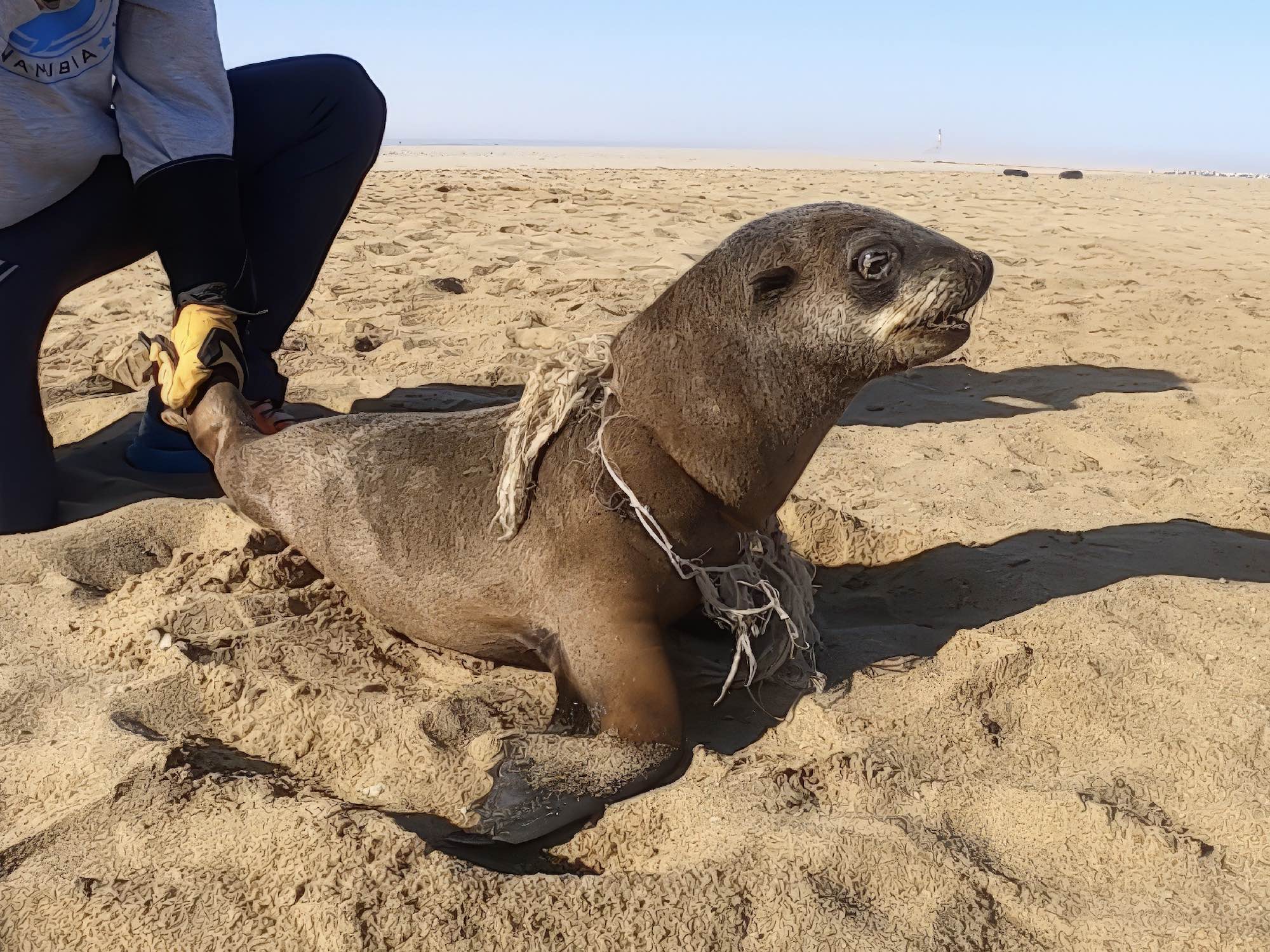
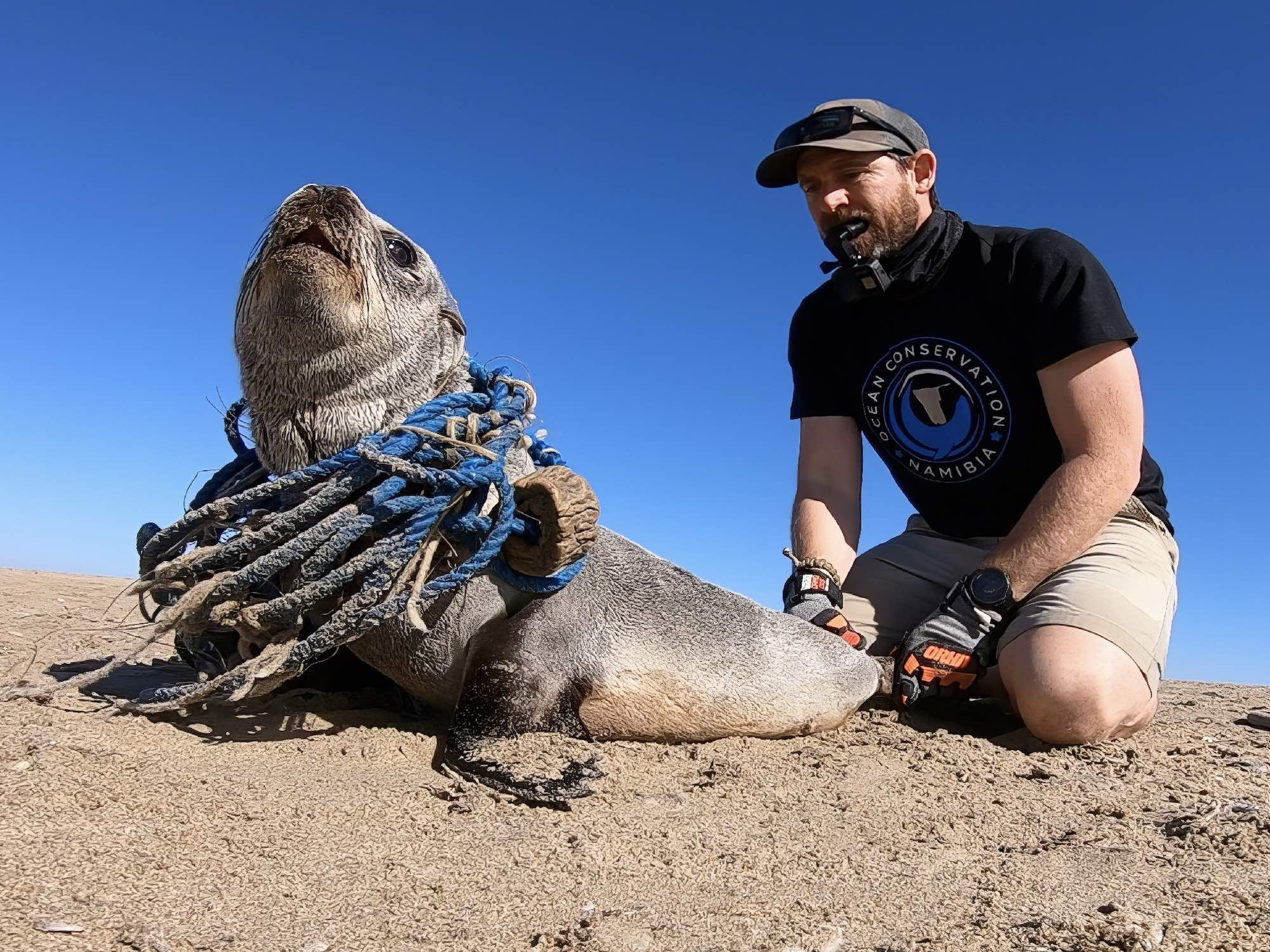
Entangled seals point to a bigger problem
Most Namibians will know that the Cape fur seal is abundant along the coast and increasing in numbers. With an estimated one million individuals in a range that includes Namibia, South Africa and Angola, it is not surprising that the International Union for the Conservation of Nature (IUCN) Red List assessed this species as Least Concern. Rescuing seals that would otherwise die a slow and painful death from man-made waste is a noble animal welfare activity, but Naude and his wife Katja see a bigger conservation picture that goes beyond seals. In their words, seals give plastic pollution a cute face
.
Something about the simple act of rescuing an animal in distress touches the human psyche and makes us care more about our environment. This human trait, combined with the power of social media, allowed Naude and Katja to create a new non-profit organisation called Ocean Conservation Namibia (OCN). Launched during the tourism shutdown caused by Covid-19 in 2020, OCN is dedicated to saving seals and highlighting the much bigger problem of plastic pollution.
Every piece of plastic we throw out on the road, or put in an ordinary dustbin rather than a recycling bin, ends up in landfill sites around our towns and cities, or is simply blown across Namibia by the wind. In the end, much of this waste is washed out to sea by rivers coming down and emptying their load of water, soil and plastic into the ocean. Plastic from every country in the world has entered the ocean this way, accumulating as massive garbage patches
that cause huge ecological damage and are almost impossible to clean up.
More direct forms of pollution involve industries operating in the ocean or along the coast. Commercial fisheries use longlines or nets for trawling, but not all of this equipment is brought back onto the boat. When fishing lines get tangled they may be cut loose, or nets break under too much pressure. This makes lines and nets one of the biggest sources of marine pollution.
The ocean is so vast that when we drop something into it we may feel that our impact is insignificant. But the collective impact of human activity on the ocean is massive. The seals rescued by OCN give us an idea of the scale of the problem along Namibia's seemingly pristine desert coastline, all of which is formally protected.
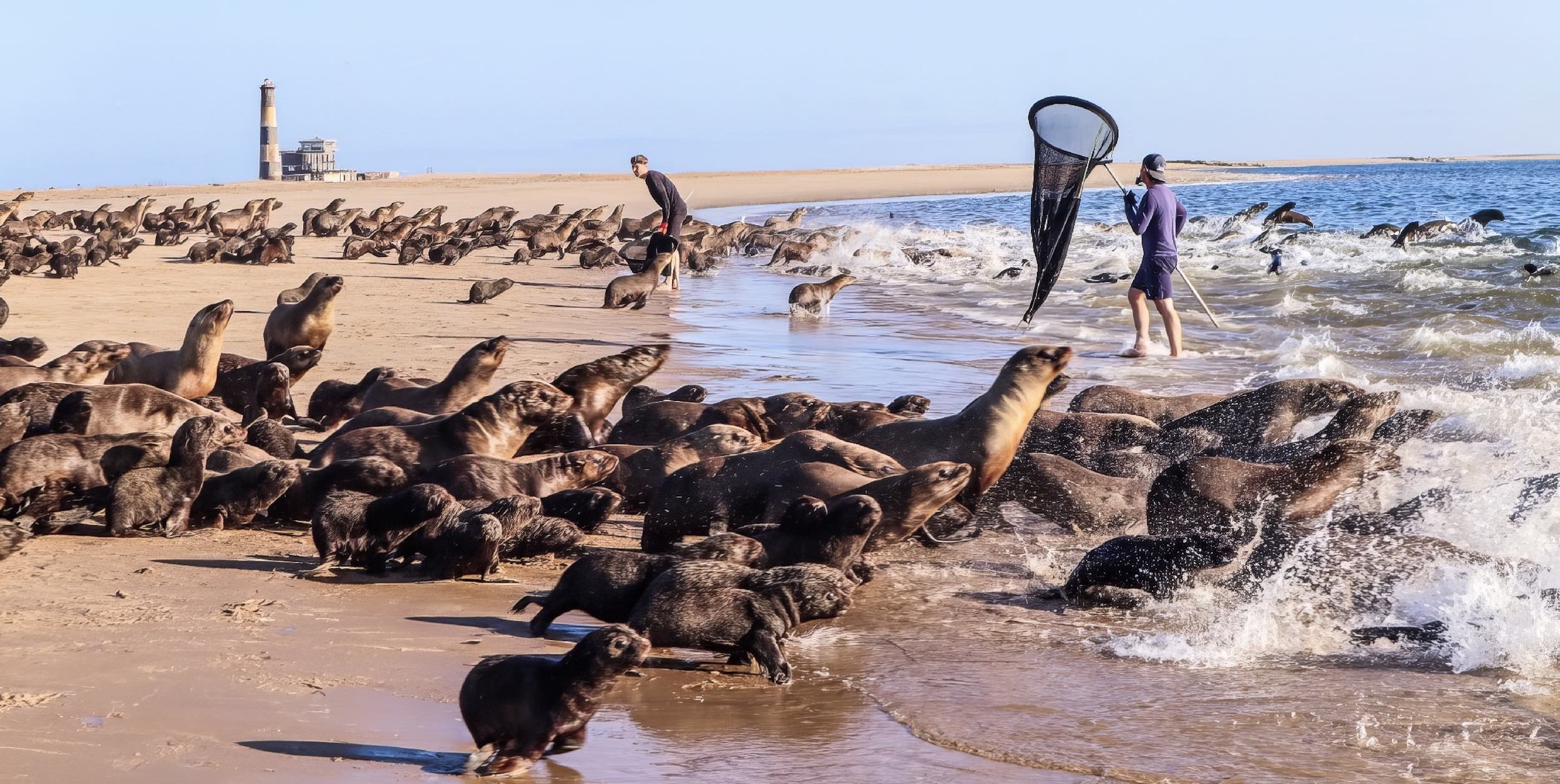
Seals as a barometer of plastic pollution
Since Naude started rescuing seals, which began with occasional operations during his regular kayak tours in 2013, and intensified with the establishment of OCN in 2020, he and his team have rescued over 3,500 individuals. The OCN team only works out of Walvis Bay and has government permission to rescue seals from the Pelican Point colony, with occasional trips to Cape Cross. OCN estimates that their operations cover only 10-20% of Namibia's seal population. Extrapolating OCN's rescue data, we are looking at some 15-30,000 entangled seals along Namibia's coastline in just a few years.
However, seals have a big advantage over most other marine animals because they frequently come ashore to rest in conspicuous colonies where people can see them. What we do not see is the number of sea turtles, dolphins, birds and other species that get entangled or ingest plastic and die agonising deaths because no one was around to rescue them. When we extrapolate this to the rest of the world, we begin to realise that the problem of ocean pollution is monumental – too big to wrap our heads around, which is why we have been so slow to do something about it.
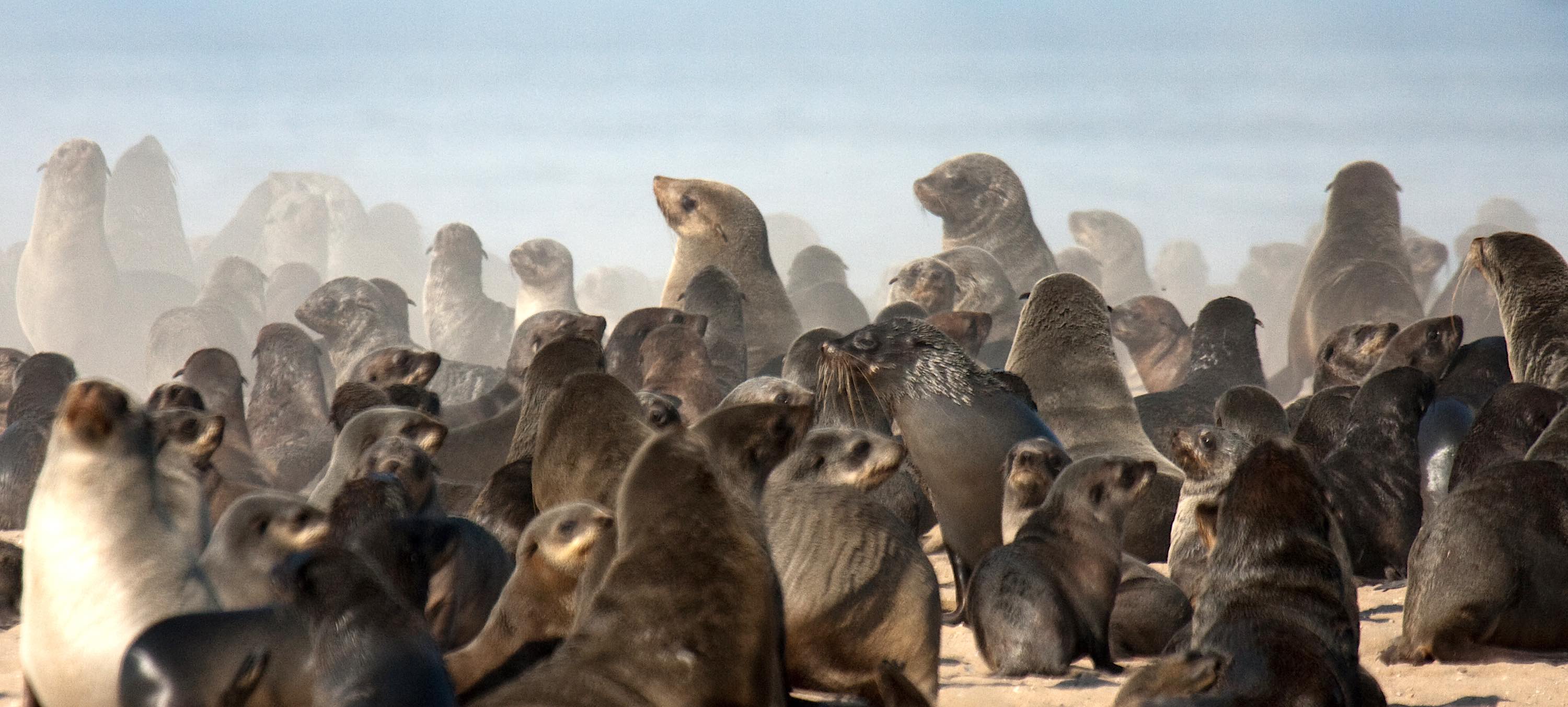
Working towards a solution
This year's announcement to ban single-use plastic bags by the Ministry of Environment, Forestry and Tourism (MEFT) is a step in the right direction. Single-use plastics are flimsy and over time tend to break down into so-called micro-plastics – fragments of plastic so tiny that we eat and drink them without realising. Marine animals also eat this plastic, which causes unknown numbers of deaths. MEFT should therefore be congratulated for this decision that will hopefully reduce plastic waste in Namibia. While this is a victory in the fight against plastic pollution, much more needs to be done.
Single-use plastics are a relatively small problem when it comes to animal entanglements. According to OCN's statistics from 2021 and 2022, fishing lines and nets are the main culprits, causing 48-52% of entanglements, followed by other plastics (36-42%) and non-plastic materials (10-12%, e.g. bits of metal or cloth). Globally, an estimated 740,000 kilometres of fishing line and 78,447 km2 of fishing net are lost at sea each year. Clearly, this problem cannot be solved without addressing the waste generated by the fishing industry.
Reducing the environmental impact of the fishing industry is certainly possible, as evidenced by the massive reduction of seabird bycatch in Namibian fisheries in recent years. The OCN team believes that two key approaches need to be followed to tackle the plastic problem: create broader awareness among fishermen and introduce laws or accreditation to reduce line and net losses at sea. A final option that may become viable in the future is the development and use of biodegradable nets and lines.
The second option would involve working with the Ministry of Fisheries and Marine Resources and the Marine Stewardship Council, which certifies Namibian fish for the lucrative export market. The Albatross Task Force's efforts to reduce bird bycatch have already set an example. Finding practical ways to retrieve lost nets or fishing line balls will require close cooperation with fishing companies operating along the Namibian coast. Although these efforts will benefit a vast number of marine species in addition to seals, OCN's statistics on seal entanglement will provide a good measure of progress over time.
Until then, OCN will continue to rescue seals and raise much-needed awareness of the problem of plastic pollution. Pending approval from MEFT, OCN hopes to access more remote colonies and save more seals from entanglement in the future. Seals may be common, but they do not deserve to die a slow and painful death. Just as people remove wire snares to save animals on land, freeing seals from their man-made burdens is simply the humane thing to do.
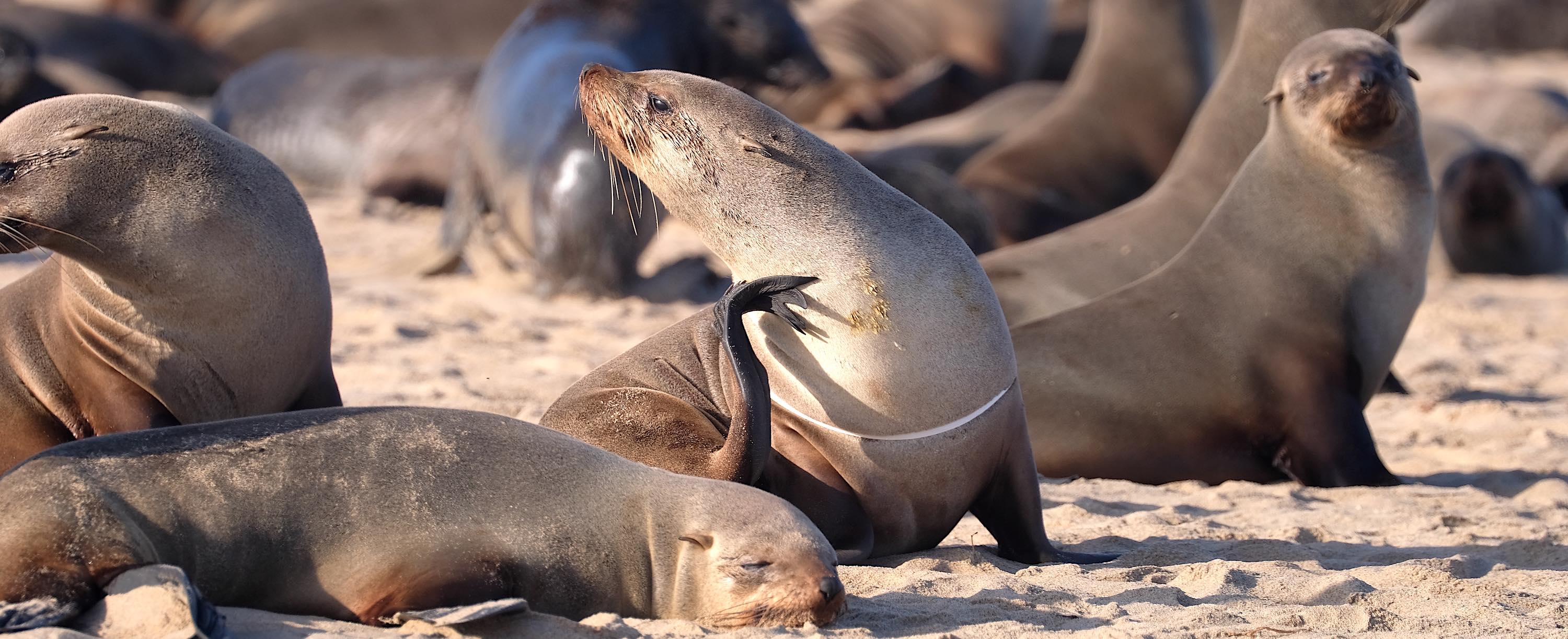
For articles on similar topics, please click one of the following options:
For more great articles from Conservation Namibia see below...
Conservation Namibia brought to you by:
We use cookies to monitor site usage and to help improve it. See our Privacy Policy for details. By continuing to use the site, you acknowledge acceptance of our policy.
